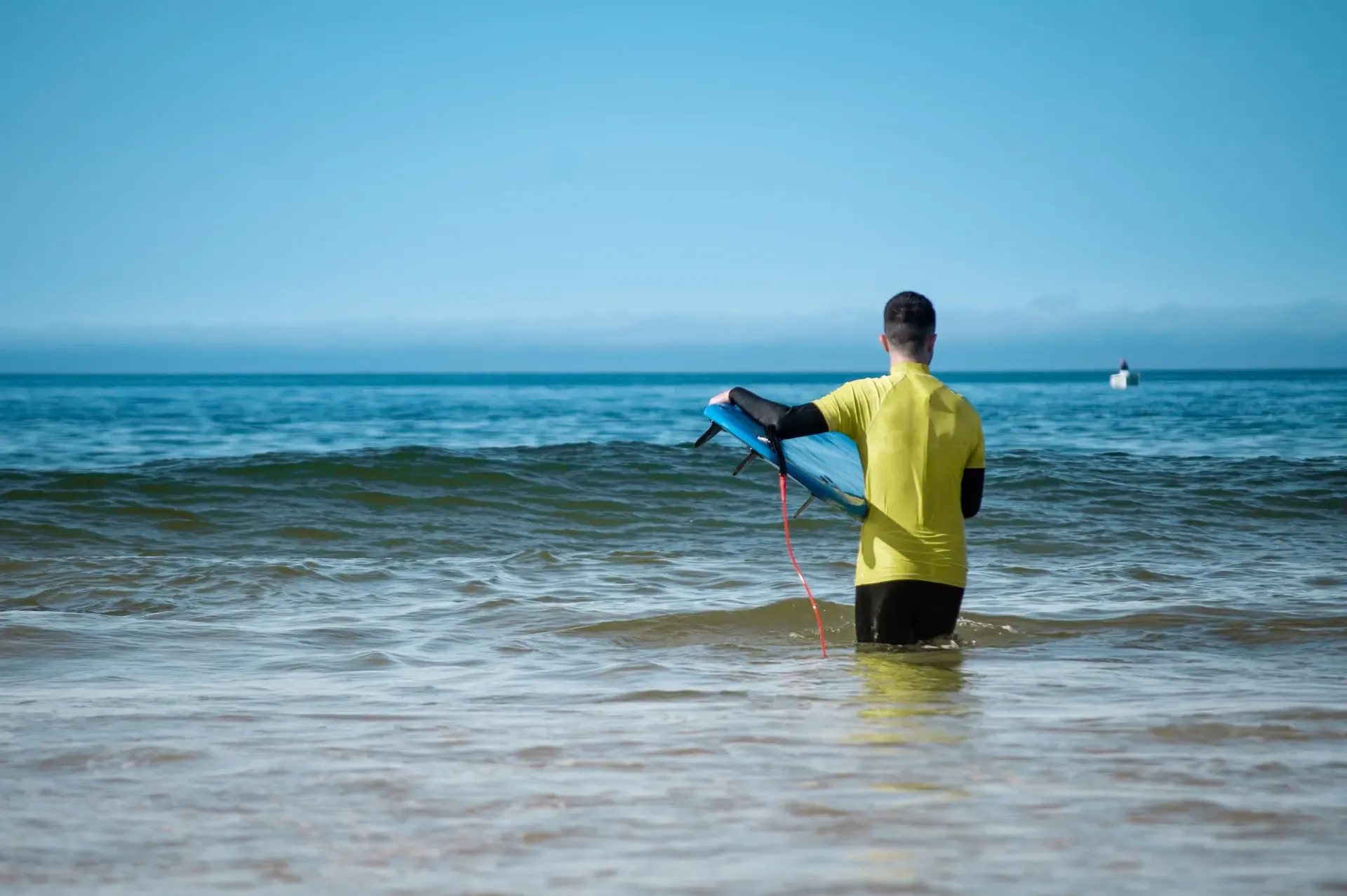Summer is coming and you want to try new things. Are you thinking about starting to surf? Do you know everything about the topic? Or would some tips be helpful?
To reach the professionalism of that surfer that everyone knows, you need to go through an arduous learning process. However, the experience will be worth it. If it’s your first time on a board, you should strictly follow these 8 basic tips for beginner surfers.
1. Choose the right board
The first board is usually like the first car: a basic model, easy to handle and prepared to withstand shocks.
For starters, you can use a softboard. They are boards that are made with foam, have a lot of buoyancy and are soft.
As you gain ease and skill, you’ll be able to choose the type of board that best suits your surfing. You can choose the size, volume, number and arrangement of fins, tip and tail type, etc. Keep in mind this tips and avoid these common mistakes when choosing a surfboard
2. Start at a surf school
Learning in a specialized school offers three main advantages: the first is that the instructors are more experienced and will know how and what to teach at each moment of your evolution. The second is that they won’t rest until you perfect your technique and perform at your best. The third is that the school provides the material so you don’t have to buy or borrow from a surfer friend.
3. Surfing requires advance planning
It’s not worth renting or buying a board and that’s it. You must first study a number of factors. The first one is looking for a beach where the necessary conditions for surfing are met (choose among the seven best beaches for surfing in Portugal)
The fact that you have a good spot doesn’t mean it will be an amazing session. Fortunately, there are specialized apps that will help you to know how the sea will be in the coming days, and whether it is worth surfing or not.
As you can see, it’s not that simple.
4. Choose a suitable location
The ideal spot for a beginner would be the oceanic equivalent of a kiddie pool. Sandy coast, without rocks or reefs and with well-marked sandbanks.
Try surfing in the foam first, stay away from the spots where the more experienced surfers are so you don’t “disturb” and if you have any questions, ask. Everyone has their level, learning pace and knows their limits. Even so, sometimes we may not be aware of our limitations and we may put ourselves and/or those around us at risk.
It’s also a good idea not to go alone with someone around in case we have any kind of mishap.

5. Learn to interpret weather forecasts
You should familiarize yourself with maps and charts of isobars, wind and waves to be able to decide when a location may or may not work. Each spot works best with certain conditions, so start “studying” to learn a little about these forecast models and thus decide the best beach to surf.
On our social networks we present the conditions for surfing on Galé beach and other activities every week, stay tuned!
6. Learn to stand up on the board
That said, let’s get to the point. These are the steps you should follow to get off the board:
- Lie on the board evenly. Don’t put more body weight on the tail or tip. The center of gravity must be in the center of the board.
- When you get up, do not put your feet together, as you will lose your balance. Legs bent and wider than hip-width apart.
- Keep your body in the center of the board, don’t lean forward or backward.
Theory is easy, practice not so much. Practicing on the sand before entering the water and being accompanied by a more experienced surfer is essential to learn more easily. You can be self-taught, but it will be more difficult.

7. Respect other surfers
Surfing is a sport with values. There is an (unwritten) law that says you can’t steal a wave from another surfer. If someone is in a better position than you to catch the wave, then you should wait for the next one. Not only to avoid any kind of shock, but also as a matter of respect.
8. Patience and sacrifice are the key to being a good surfer
If you don’t have either of those two qualities, it’s best to forget about surfing. On the one hand, patience is the basis for the following reasons: when you see in the applications that there are not going to be good waves in the next few days. Also, you don’t learn to surf in two sessions, it takes a long time before you can really enjoy it. Therefore, patience must be accompanied by a sacrifice, waking up early almost every day to be able to surf at the best time of day (with less people and wind) is part of a surfer’s sacrifice.

Common mistakes of beginner surfers
There are a number of mistakes that are very common among beginners in the world of surfing.
Listing them here won’t really help you to be a better surfer, but at least you’ll know what your mistakes are and you’ll be able to correct them little by little.
Briefly, the most common mistakes are:
- Not choosing the right board
- Getting too far back on the plank
- Getting too far ahead on the plank
- Get up (pop up) late
- legs too far apart
- Look at the board, not the direction you are surfing
- Not paddling enough

Surely you identify with some of these points. Now, when you get in the water, you’ll be a little more aware of the mistakes you need to work on. If you can improve any of these mistakes, you’re on the right track.
Keep on reading: 3 key factors for choosing the right wetsuit.

